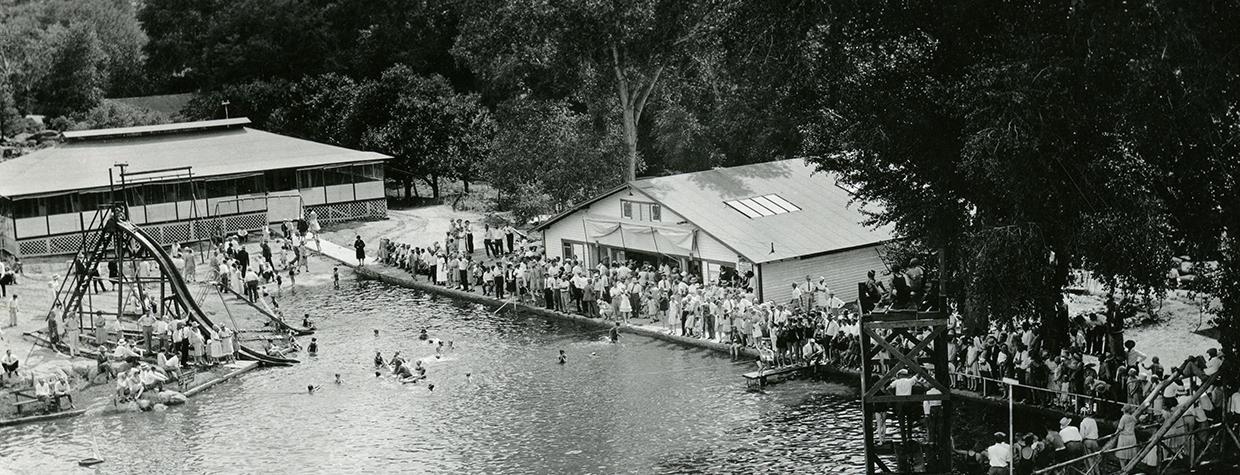There’s some debate about the inception and original ownership of Granite Dells Resort, which was a prime vacation spot in the Prescott area from the early 1900s to the 1970s. The Weekly Arizona Journal-Miner listed the resort’s grand opening in 1903, but an article in the Prescott Journal-Miner from May 1907 announced another opening four years later. Several articles reference the “original” owner being a businessman named Ed Shumate, who reportedly sold the property in 1905 after investing a large amount of money in upgrading the facilities.
An article from June 16, 1903, mentioned the upgrades, such as a new pavilion that could seat 300 to 400 people, stating: “Mr. Shumate has spent a pile of money this spring in putting this resort in fine shape so that our people could have a pleasant place to go and spend a day or go and stay a few weeks. … There is not a more pleasant place for rest and recreation anywhere than Granite Dells.”
The resort, which featured a large pool and areas for people to enjoy various sports, became a hub for holiday celebrations such as the Fourth of July and Labor Day, and thousands of people would attend those festivities. A Journal-Miner article from September 7, 1904, called the resort’s Labor Day celebration the “most elaborate,” with an estimated 1,000 to 1,500 people in attendance. People came by train from nearby towns such as Jerome and McCabe to celebrate the holiday and enjoy the resort’s amenities.
The ownership of the resort passed to the Payne family in the early 1920s and remained there until the facility closed in the 1970s. An Arizona Daily Sun article from July 2002 pointed to increasing insurance and upkeep costs as reasons for the resort’s closure. The same article detailed the preservation process for the Granite Dells Resort property, mentioning that the descendants of the Payne family weren’t able to maintain the land but were looking for ways to preserve the history.

